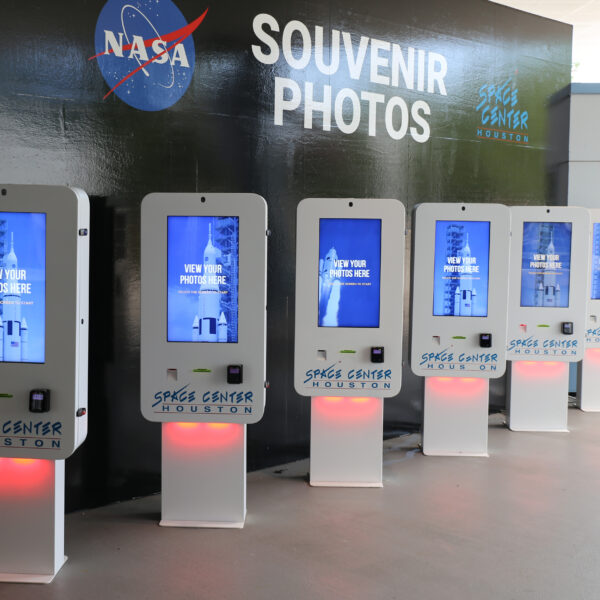
Kiosks
Close
Kiosk Industries


Today, more and more brands are recognizing the importance of displaying their merchandise so customers can see, feel, and interact with the product. This is especially important with product that is visually appealing, has finer details, or relies on a person learning more by interacting with it.
Because of this, initial discussions about retail display programs will include conversations about securing product to deter theft as well as safely displaying potentially dangerous merchandise.
Here we detail different options available to showcase products securely and safely on store displays.
When discussing display cases, many people often think of fixed, cabinet structures with a glass front. While this is one style of display case, the term can also refer to items like small plastic enclosures that encase products individually on a shelf. These are seen frequently with items like video games and small electronic accessories. These types of cases prevent theft and can be taken off by a store associate during the checkout process.
The more traditional cabinet-style display cases enable retailers to showcase expensive items and allow shoppers to observe the merchandise while keeping it secure. This type of display case is also a good fit for controlled products such as liquor, cigarettes, and over-the-counter medications.
Something to consider with display cases is that while they do provide heavier security, they also limit customer interaction with the products. However, the items typically safeguarded within a display case are frequently not items that require handling until purchase.
With the ever-increasing problem of smash-and-grab theft, security cables are becoming more popular on point of purchase displays. But how do these handy devices work, and what is their impact on the customer in-store experience?
Security cables allow for increased consumer interaction while keeping the product tethered to the display. Oftentimes, tethers use a reel system so product is attached to the store display, but can be picked up, moved, and examined. These cables work best when they are looped directly through part of the product, such as a handle or drilled hole, avoiding the need for adhesive, which can sometimes be less reliable.
While beneficial to the customer experience, using cables is less secure than placing the product directly in a display case, which is why they’re an excellent option for less expensive items that benefit from a more hands-on approach by the customer. Additional security measures can also be implemented with the use of alarms that go off if product is separated from the cable on a display.
Brackets, like cables, allow for customers to interact with the display product. However, the interaction is slightly more limited, as the product is secured directly to the bracket. This provides increased security for the products being highlighted.
Brackets are unique in that there isn’t a one-size-fits-all solution. Oddly shaped products require a custom bracket be designed and manufactured. This means that once a product becomes obsolete, so does the bracket. Because of this, brackets are recommended for products that fit into the category of a “basic shape.”
For instance, products that are more rectangular or round, like phones, watches, or GPS devices, would be excellent candidates for brackets. Their traditional shapes make it possible to trade out similar products while still using the same bracket.
An often utilized feature for product display is the use of dummy and demo units. But what are dummy and demo units, and what do they have to do with product showcasing or security?
A dummy unit is a nonfunctioning replica of the product for sale that was specially made for display purposes. Some common products that receive dummy equivalents are watches, phones, GPS devices, and other electronics. These units look almost identical to the functional merchandise but have been manufactured separately from the products. Because of this, the cost for dummy units can sometimes surpass the cost of the actual product itself.
A demo unit is the actual product being sold, but it has been modified for display purposes. Some examples of demo units would be blenders with the engines taken out, unsharpened knives, and wireless speakers without functioning Bluetooth. Oftentimes, using demo units is a more affordable alternative for brands since no product duplicates need to be designed or manufactured.
Using dummy and demo units deter theft since they don’t operate as intended, but they’re beneficial for allowing buyer interaction. Consumers can touch and see the details of the merchandise, while the actual sale units remain boxed and on the shelf.
Whether it’s utilizing a display case, security cables, brackets, or employing demo and dummy units, creating a store display with security and safety features that make sense for your product is the end goal. These can be standard options or custom solutions tailored to your merchandise. Based on your objectives, your retail display manufacturer will be able to suggest the best route to ensure your product is secure.